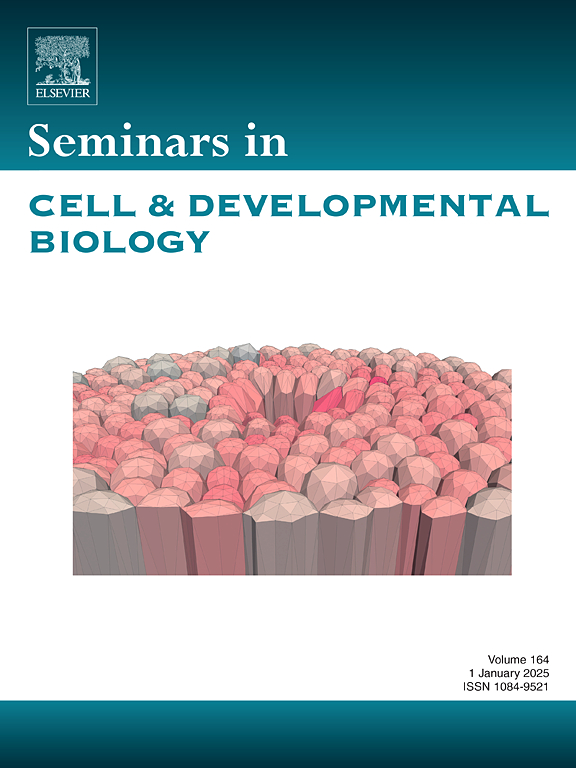Establishment & maintenance of collective cell migration in angiogenesis: Lessons from zebrafish
IF 6
2区 生物学
Q1 CELL BIOLOGY
引用次数: 0
Abstract
During tissue development, growth and regeneration, assembly of almost all new blood and lymphatic vessels arises via their branching from pre-existing vessels, processes termed angiogenesis and lymphangiogenesis, respectively. Furthermore, imbalances in these branching processes contribute to numerous disease states, including cancer, blindness, arthritis and ischemic disorders. At its core, new vessel branching is driven by the coordinated collective migration of specialized endothelial “tip” cells that lead sprouting vessels and “stalk” cells that trail the tip. Thus, studies defining the fundamental mechanisms directing angiogenesis and lymphangiogenesis not only have key therapeutic implications but have also defined core conserved principles dictating collective cell migration. In this review we focus on recent insights into the roles of intracellular, intercellular and cell morphology-driven positive- and negative-feedback loops in the establishment and maintenance of tip versus stalk cell identities and behaviour. Moreover, we highlight recent insights into the role of asymmetric cell divisions in self-organisation of the tip-stalk cell hierarchy during vessel assembly. Considering that many of the principles underpinning collective movement are broadly conserved between tissue systems, concepts described here likely play key roles in the control of collective cell migration in diverse tissue contexts.
血管生成中集体细胞迁移的建立和维持:来自斑马鱼的经验
在组织发育、生长和再生过程中,几乎所有的新血液和淋巴管的形成都是通过原有血管的分支形成的,这一过程分别被称为血管生成和淋巴管生成。此外,这些分支过程的不平衡导致许多疾病状态,包括癌症、失明、关节炎和缺血性疾病。在其核心,新的血管分支是由专门的内皮“尖端”细胞的协调集体迁移驱动的,“尖端”细胞引导发芽血管和“茎”细胞跟踪尖端。因此,研究确定了指导血管生成和淋巴管生成的基本机制不仅具有关键的治疗意义,而且还定义了决定集体细胞迁移的核心保守原则。在这篇综述中,我们将重点关注细胞内、细胞间和细胞形态驱动的正反馈和负反馈回路在尖端与柄细胞身份和行为的建立和维持中的作用。此外,我们强调了最近对不对称细胞分裂在导管组装过程中尖端柄细胞层次自组织中的作用的见解。考虑到支持集体运动的许多原则在组织系统之间广泛保守,这里描述的概念可能在不同组织背景下控制集体细胞迁移中发挥关键作用。
本文章由计算机程序翻译,如有差异,请以英文原文为准。
求助全文
约1分钟内获得全文
求助全文
来源期刊
CiteScore
15.10
自引率
1.40%
发文量
310
审稿时长
9.1 weeks
期刊介绍:
Seminars in Cell and Developmental Biology is a review journal dedicated to keeping scientists informed of developments in the field of molecular cell and developmental biology, on a topic by topic basis. Each issue is thematic in approach, devoted to an important topic of interest to cell and developmental biologists, focusing on the latest advances and their specific implications.
The aim of each issue is to provide a coordinated, readable, and lively review of a selected area, published rapidly to ensure currency.

 求助内容:
求助内容: 应助结果提醒方式:
应助结果提醒方式:


